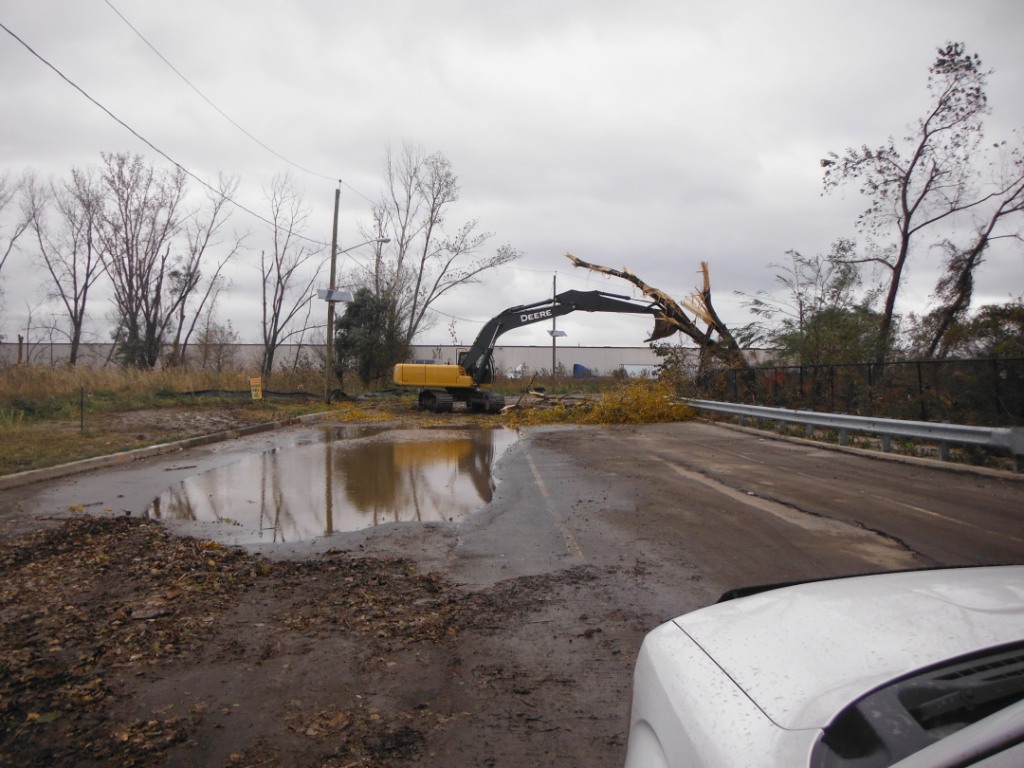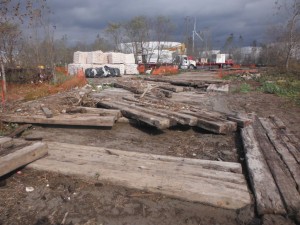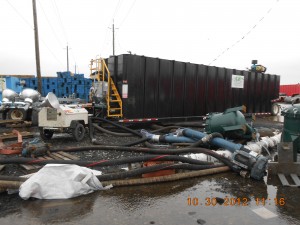September 2013, Vol. 68 No. 9
Features
Restoring Utilities After Disasters

Immediately following major disasters, utility crews are busy working to restore vital services.
Winter or summer, seasonal storms disrupt power and communications leaving anywhere from a few thousand to several hundred thousand people without vital services. Loss of power also can affect water and sanitary sewer services, making life difficult for area residents and those in the area to restore services.
Risks inherent to utility construction are well known and utilities and contractors have safety procedures in place to address them, but restoring services in disaster areas brings serious additional hazards that require special attention.
Bill Mattiford, vice president – safety for utility contractor Henkels & McCoy, presented a session focused on working safely while restoring services after disasters as part of the Damage Prevention and Safety Track at the 2013 UCT Show. This article is based on information from that presentation with additional details provided by Mattiford.
Emergency utility crews often are on the scene almost as quickly as first responders whose task is caring for storm victims. Downed power and communications lines and poles may be the most obvious utility damage, but buried lines and components also risk storm damage, such as floodwaters filling underground vaults, tunnels and other structures and destroying components.
As residents wait, many times impatiently, for services to be restored, they usually notice that many of the work crews are in vehicles owned by utility providers and contractors from hundreds of miles away.

Helping hand
“Utility companies take a ‘mutual aid’ approach in times of trouble,” said Mattiford. “They help each other out by sending crews and equipment and, if possible, they release contractors working on regular projects to help with recovery operations.”
Restoring services following disasters is a large portion of Henkels & McCoy’s work, said Mattiford. The company’s storm response team coordinates personnel and equipment from its three regional headquarter areas — eastern, central and western — with support from other regions as necessary.
“Our crews come with trucks and equipment to do whatever is necessary,” Mattiford continued. “Affected utilities provide cable, poles, structures and other materials. We work under the control of the utility, who provides housing, parking and dispatch areas.”
Law enforcement officers, firemen, medical emergency teams and other first responders will be in the area, followed closely by Red Cross, Salvation Army and other relief agencies, and then by volunteers wanting to help.
Obviously restoring damaged infrastructure is much different than routine utility work, said Mattiford. Challenges and hazards vary with the type of disaster, area of the country and season. Restoring outages resulting from an ice storm are much different than conditions in hurricane ravaged, flooded areas. Each event poses its own challenges and risks and requires different personal gear.
Henkels & McCoy was heavily involved following Hurricane Sandy in the Northeast and Katrina in the Gulf Coast and New Orleans.

“With Sandy,” said Mattiford, “hotels and motels were available in areas where there was power, so personnel had a level of comfort during their time there. However, fuel supplies ran out, and for a time the utilities and National Guard had to haul fuel in to keep work going.
“After Katrina, food had to be brought in, and we were sleeping in tents and on church pews. Church members were taking some crew members home with them for a place to sleep. It is not unusual for workers to stay in schools and community centers.”
Dressed for conditions
In addition to equipment and tools, emergency workers must have safety and personal gear clothing appropriate to the circumstances. Ice, snow and freezing temperatures make work difficult. After hurricanes and floods, there are mosquitoes, spiders and other insects and both displaced pets and wild animals roaming the area for food and shelter. There often is risk of exposure to infectious materials and sewage contamination.
After earthquakes, tornadoes and hurricanes, there is extensive damage which compromises the structural integrity of buildings. Another concern is who will acquire or prepare daily food? Some personnel have dietary restrictions for diabetes and other health problems. Workers must bring medications and copies of prescriptions.
Flooding and accompanying hazards can affect areas outside the flood zone. Swift moving waters dislodge equipment and materials, weaken roads and bridges. Fast-moving water only six- inches deep can knock a man off his feet. Two feet of water can cause a car or truck to float.
Conditions of chaos following a disaster complicate recovery efforts in many ways. Both wired and wireless telephone services and therefore the 911 emergency number, may be out which complicates communications. Until phone services are restored, communications among various agencies depends on two-way radios, often with no common frequency to connect all parties on site.
Conditions in the area exacerbate human error traps that can lead to accident and injury. “Working in these environments involves changes and departures from routine that include distractions and interruptions leading to stress,” said Mattiford. “That stress may include personal issues for workers whose families are in the storm area or have been left at home far away. They also can lead to inaccurate perceptions of risk and taking mental short cuts that lead to accidents.”
Not all employees on emergency projects may be experienced in disaster work — some may be new to the company and inexperienced. Stress from a combination of frustrations may lead to personality conflicts.
In addition, the public may be friendly at the outset of restoration activities, but lose patience the longer they are without basic services. Dealing with multiple representatives of many organizations can also contribute to stress.
Safety first
Disaster recovery operations do involve accident and injury risks not found in normal utility work, but organizations with sound basic safety programs have necessary procedures in place that take into account these added risks.
Mattiford said safety begins at the company management level and permeates through every level of the organization.
Each slide of Mattiford’s UCT presentation carried a circular logo: Nobody Gets Hurt!
“Management is responsible for preventing injuries,” said Mattiford. “All injuries are preventable. Nobody Gets Hurt!”
In addition to this statement of commitment, Henkels & McCoy’s Safety Principles include:
• Working safely is a condition of employment;
• Training employees how to work safely is essential;
• All hazards can and will be safeguarded promptly; and
• Safety observations with coaching are fundamental.
“The principles that energize our safety culture and performance expectations maximize the way we observe behavior and communicate, investigate and develop work practices,” said Mattiford. “From the Executive Safety Council and Regional Safety Steering Teams to Process Improvement Teams and individuals, Henkels & McCoy’s employees, safety represents a ‘value’ that is interwoven into our culture and daily practices.”
He added that the company relies on indicators such as Total Recordable Incident Rates (TRIR) and Days Away, Restricted Duty and Transfers (DART) to perform trend analysis and program validation of safety performance. Additionally, there is a focus on the identification and management of root causes of incidents whether present in the environment, mindsets or traditional practices.
Mattiford said implementation of its safety program has produced dramatic results.
H&M’s OSHA recordable rate improved by over 40 percent from 2008-2012, while it’s DART Incident rate improved by more than 60 percent. Henkels & McCoy received the E.I. DuPont Safety Excellence Award in recognition of outstanding achievements during the past three years. At the presentation, DuPont representatives emphasized, that to their knowledge, no one outside of DuPont had every received this award, said Mattiford.
Based in Blue Bell, PA, Henkels & McCoy is a diversified engineering and utility infrastructure contracting company that designs, builds and maintains infrastructure for the energy, communications and water markets. Services include project management, engineering, construction, installation, maintenance and training services to utility, commercial, industrial and government customers.
FOR MORE INFO:
Henkels & McCoy, 1-888-HENKELS, www.henkelsandmccoy.com




Comments